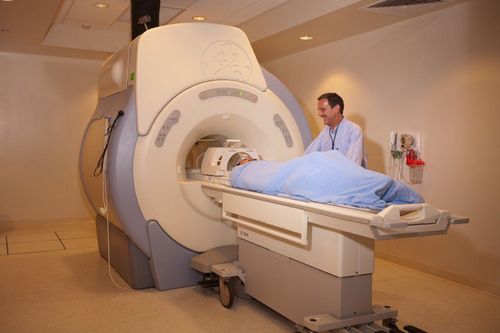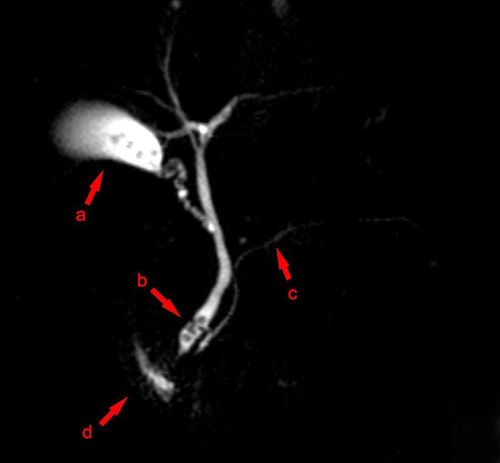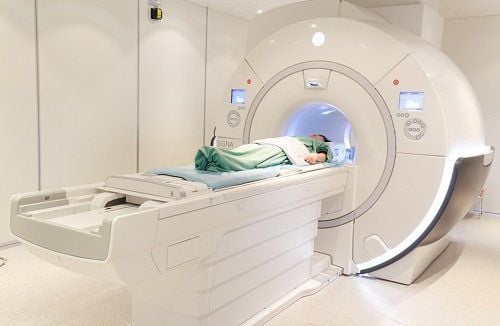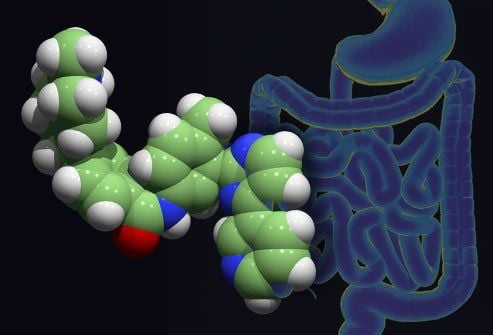This is an automatically translated article.
The article was professionally consulted by resident Doctor Nguyen Quynh Giang - Department of Diagnostic Imaging and Nuclear Medicine - Vinmec Times City International Hospital.Magnetic resonance imaging (MRI) without injection is one of the most common bone and joint imaging tests. Compared with other imaging methods, MRI of joints has many outstanding advantages, helping to identify soft tissue structure and hard tissue in the clearest and most accurate way.
1. What is a joint MRI?
Magnetic resonance imaging (MRI) is a noninvasive medical test that doctors use to diagnose and treat medical conditions. MRI absolutely does not use ionizing radiation (X-rays) like X-rays or computed tomography, so there is no risk of exposure.The principle of a specialized joint MRI is to use radio frequency, magnetic energy and a computer to create images of the bones, muscles, tendons, ligaments and cartilage in the knee and the surrounding area at any joint position.
MRI tests can be tailored to specific joints. Of these, large joints such as shoulders, hips, knees, ankles and feet are most often concerned due to the frequency of common diseases, but basically all joints can be evaluated.
The advantage of MRI is that it helps to show joint anatomy to a higher degree than other imaging modalities such as X-ray or CT. Detailed MRI images of the joints allow doctors to determine the presence of several lesions. Common indications include evaluation for causes of pain such as from trauma or osteoarthritis. MRI is also good at evaluating soft tissues around joints that can become inflamed, like tennis elbow.)
For joint MRI at the knee in particular, the obtained image results help doctors evaluate arthritis, damaged cartilage, degenerative joint, ligaments, tendons or other abnormalities, including the presence of fluid accumulation in the knee area.
In addition, other conditions that may be diagnosed with a joint MRI include joint tumors, arthritis, genetic abnormalities, and bone and joint disease. Usually, when approaching patients with joint problems, the first indication is musculoskeletal ultrasound or joint X-ray.
However, with the means of magnetic resonance imaging without injecting magnetic contrast, the structural components at the joint are always clearly visible, helping the doctor to identify the injury and adjust the diagnosis.
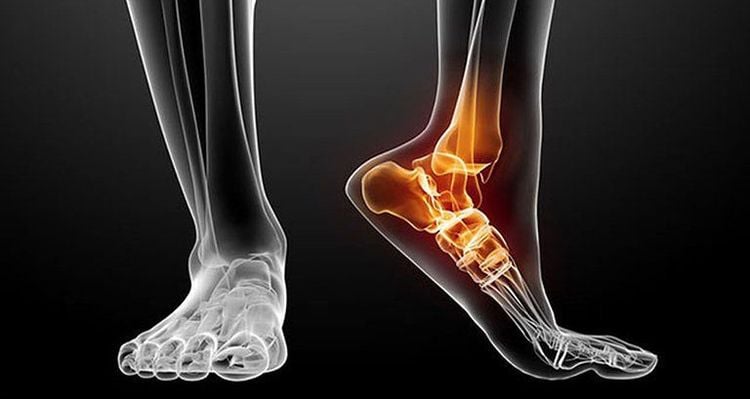
Kiểm tra MRI có thể được điều chỉnh theo các khớp cụ thể
2. Indications when needing magnetic resonance imaging of joints without injection of magnetic contrast drugs
Imaging acquired with non-contrast joint MRI is necessary in the following situations:Evaluate any damage within the joint, eg tear of the anterior cruciate ligament at the head joint knee
Assess for degenerative joint wear such as cartilage loss or meniscus tear
● Evaluation for any inflammation in the joint and of surrounding structures such as tendons, ligaments, bursitis
● Assess the reason for local swelling or pain related to the joint
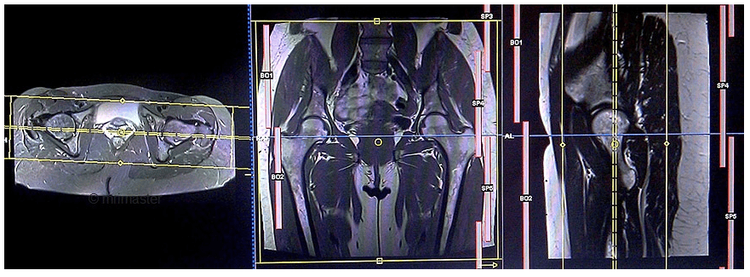
Hình ảnh thu nhận khi chụp cộng hưởng từ khớp không tiêm thuốc đối quang từ
3. Magnetic resonance imaging procedure without injection of magnetic contrast agent
Because the presence of metal is a contraindication to MRI in general, it is important to let your doctor know if you have a pacemaker, metal foreign bodies such as shrapnel, or other types of shrapnel. clip, clamp aneurysm bag.You can wear your personal clothes normally as long as they do not contain any metal components, including buttons, zippers and metal threads.
However, to ensure the most ideal shooting conditions, you should change into specialized clothes for magnetic resonance imaging at the imaging room; at the same time, this also makes you more comfortable while lying still for a long time. In addition, you will also be asked to remove all jewelry, glasses, dentures, wigs, wallets, bank or credit cards... from your body.
Since you have an MRI without injecting contrast, you do not need to fast the night before your scan. If you are taking medication for a chronic medical condition, you can continue to take it as prescribed. If you need medication for pain due to an acute or chronic joint disease, you should also take medication to make the MRI more comfortable, as you will have to lie still during this time.
When the preparation for non-contrast joint magnetic resonance imaging is ready, a slide in the machine's lap will come out. You need to lie on a table, with your head or legs in front, depending on the type of joint to be assessed as an upper or lower body joint. The slide will then move, bringing the scanned body into the center of the body, which is essentially a giant magnet tube.
This whole process will be observed by the control technicians in the next room. Once the area to be surveyed has been located, the technician will operate the machine. You will hear a very loud noise while the machine is scanning. Therefore, if the noise is too loud, you will be able to wear earplugs or headphones to listen to your favorite music and relax during the shooting process.
If you have a feeling of suffocation, anxiety, please inform the technician to prescribe medicines that can help you feel more comfortable. However, if you need this medicine, you will need to have a loved one drive you home after the scan and you will also need to avoid operating a vehicle or machinery for at least one day afterward.
In general, the time for joint MRI without injection is usually within 30 to 45 minutes. If only one joint is examined, the time will be shortened. Once the quality of the captured images is ensured, the technician will help you sit up and take you out. At this point, you can go home and do your normal activities as your bones and joints allow.
The time required to read the results is often longer and requires a specialist radiologist to evaluate and analyze. Results will be sent back to the appointing doctor. By combining the medical history, symptoms, physical examination, and other imaging findings, the physician will make a diagnosis and guide treatment.
In case of joint damage that requires surgical intervention, the results of this non-contrast MR joint can be the basis to help shape the surgical protocol to be performed as well as to provide evidence for the compare and contrast the effectiveness of treatment in the future.
In summary, joint damage was investigated with non-magnetic contrast-enhanced joint magnetic resonance vehicle. Thereby, the anatomical structures are clearly displayed, helping the doctor to identify the joint damage in the best conditions and offer effective intervention directions, improving as well as preserving the joint's movement function in terms of joint function. Castle.
Vinmec International General Hospital is one of the hospitals that not only ensures professional quality with a team of leading medical doctors, modern equipment and technology, but also stands out for its examination and consultation services. comprehensive and professional medical consultation and treatment; civilized, polite, safe and sterile medical examination and treatment space.
Doctor Giang has many years of experience in the field of diagnostic imaging, especially in the field of multi-slice computed tomography, magnetic resonance. Currently, the doctor is working at the Department of Diagnostic Imaging and Nuclear Medicine - Vinmec Times City International Hospital.
Customers can directly go to Vinmec Health system nationwide to visit or contact the hotline here for support.





